Spicers Scenic Rim Trail in Queensland an exercise in indulgence
Just an hour from Brisbane is a multiday bush trail to soothe city nerves – and there’s not a tent in sight.

As any experienced hiker will tell you, it generally takes until the third night of any multi-day trip for the group to feel comfortable enough to get up in front of each other and start imitating prehistoric gastropods.
A team-building game of charades has been convened by Juanita Popple, our lead guide on the Spicers Scenic Rim Trail in southeast Queensland. The setting is sublime, a timber-panelled eco-cabin at the edge of the subtropical rainforest, after-dinner tipples and chocolates within arm’s reach in front of the fire, and the competition is fierce.
Will it be team building or team busting? Wild gesticulations and urgent shouts fill the room. We try to keep clues tied to things we’ve seen that day, which somehow makes the game harder. Re-enacting the famous restaurant scene from When Harry Met Sally is easy, but how would you go miming “outstanding buttress” or “Scenic Rim snail hanging from its own slime”?
Maybe the game is a clever way of helping us retain all the weird and wonderful things we’ve experienced on this five-day hike.
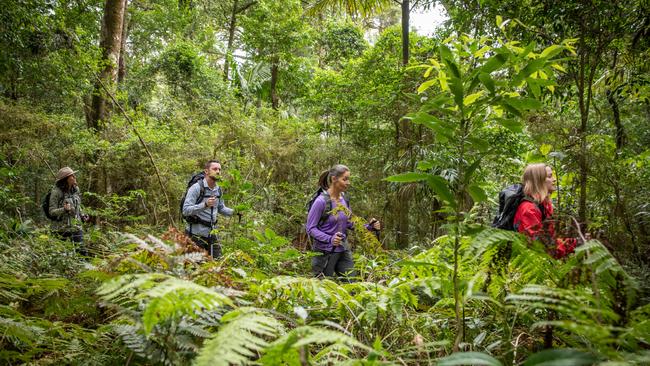
Earlier in the day we were invited to tune out, to break from the group and walk alone in the bush. The Japanese call it shinrin-yoku, or “forest bathing”. Inner peace achieved, we reassembled to share the rainforest as a group, to marvel at the fabulous fungi that grow from the side of trees like a Brancusi sculpture, and – yes – the outstanding buttresses of the tropical trees.
Of course, this is the paradox of hiking: you go bush to clear your head but there’s so much to take in. But it’s a different sort of head-clutter to city anxieties, and the stimulation is soothing rather than suffocating.
We’re little more than an hour inland from Brisbane and yet this is a place few know about. Bail up random strangers in Queen Street Mall and I doubt many would have heard of Main Range National Park, maybe because it doesn’t have the same alluring imagery conjured with names such as Lamington National Park or Glass House Mountains. But it’s also never had a walking track quite like this.
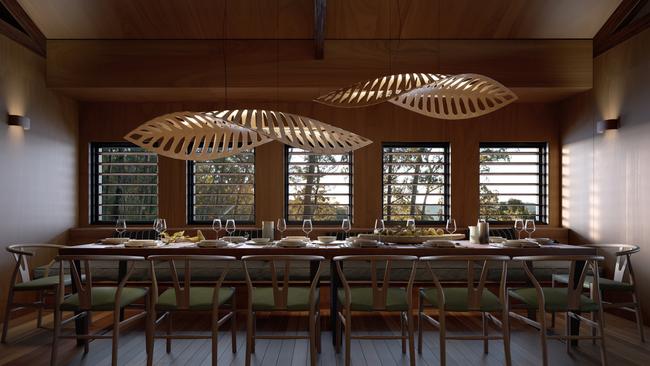
Opening in June last year, it’s the only Queensland inclusion in the Great Walks of Australia, an elite collection of guided hiking trails that combine breathtaking landscapes with impeccable hospitality.
It is notable for combining two contrasting geographic wonders: a section of the Gondwana Rainforests of Australia World Heritage Area, and the rim of an ancient caldera, a giant shield volcano formed 30 million years ago when Australia moved over a hot spot in the Earth’s crust. Free campsites for unsupported walkers have also been built, making it accessible for all.
The Spicers Scenic Rim Trail is largely the passion project of Jude Turner, founder of the Spicers Retreats stable of luxury lodges throughout Queensland and NSW. Her dream was to connect Spicers Hidden Vale lodge near Grandchester (where we spend our first night) with their mountaintop retreat Spicers Peak Lodge at Maryvale in the Southern Downs.
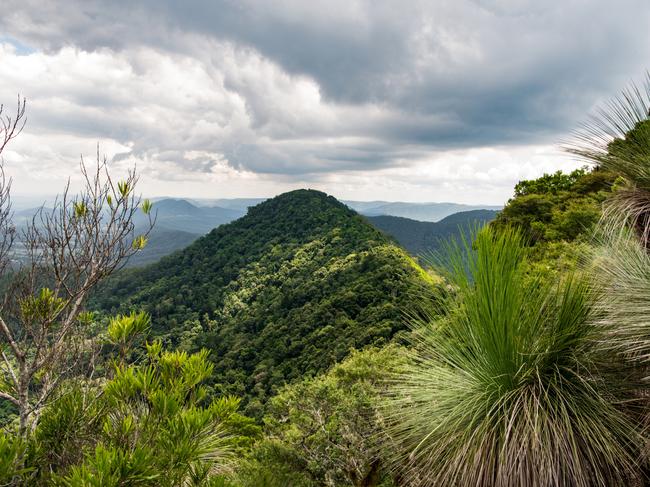
That theme of connection has room to expand as the trail matures. The mountain passes we walk across connected the Indigenous Yuggera people with the inland Bunya Mountains. The First Nations people knew and utilised every essence of this landscape, from the grass trees used for spears and resin, to the outstanding tree buttresses themselves, which they would thump with rocks to send sound waves echoing through the valley for communication.
For the European settlers, Spicers Gap on the Main Range connected Brisbane to the Darling Downs, while timber-getters hauled out red cedar trees to become iconic Queenslander homes in Brisbane.
It’s also an immersion in the interconnectedness of nature, from the “social network” of subterraneous fungi intertwined with the roots of the trees, connecting plants to each other like a telephone switchboard, to the staghorn ferns that attach themselves to the tallest trees, to the creepers and vines that connect the canopy. We see the rainforest as a living, breathing organism, a perfectly attuned ecosystem unbroken since the time of the super continent Gondwana.
But it’s not without threats. Bushfires in September 2019 tore through the hillside we climb on the first day, and weeds have colonised the razed ground. Later in the trip we’re confronted by the damage wrought by feral pigs, and walk through corridors of lantana growing higher than houses. In the streams lurks the constant danger of the deadly amphibian chytrid fungus, which has already devastated Australia’s native frog population; all sobering reminders that fighting the scourge of invasive species will be one of the key battles in protecting this area into the future.
We cover 60km in four days. The pace is leisurely and the terrain manageable for anyone with reasonable fitness (an 81 year old has completed the trail, I’m told). But you’ll know you’ve been walking. The more difficult sections involve picking our way down narrow shoots of slippery rocks, negotiating tree roots, the (optional) ascent of a 16m ladder up a vertical rock face and the occasional rock-hopping stream crossing. We carry day packs with little more than our lunch, water and a raincoat; our luggage is portered by car and waits for us in our rooms at the end of the day. It’s a slick operation.

After a clifftop sunrise at Mount Mistake Farmhouse we follow an old logging road along the crest of the caldera. Birds are constant companions, from the deafening crack of the eastern whipbird to wedge tailed eagles soaring overhead to the melodious song of lyrebirds.
The charms of the logging road start to wear thin by the afternoon, so it’s a pleasure to veer off along a hidden footpad and plunge into the rainforest. The temperature drops as we enter a subtropical wonderland of hanging palm lilies, towering carabeen trees (many wearing the spectacular but ultimately fatal necklace of a strangler fig), Bangalow palms, jungles of wonga vines and gushing mountain streams. It’s the full Derwent pencil palette of greens, with the sunlight filtered through the trees, illuminating the shadows. The Japanese call this quality of light Komorebi, and it sends us back into full shinrin-yoko mode, our senses activated like never before.
Arriving at the eco-cabins after the day’s walking is a thrill, tempered slightly by the sight of a big four-wheel drive parked at the front door. But any unwelcome reminder of modern life is soon forgiven when the charcuterie platters and welcome drinks are unveiled.
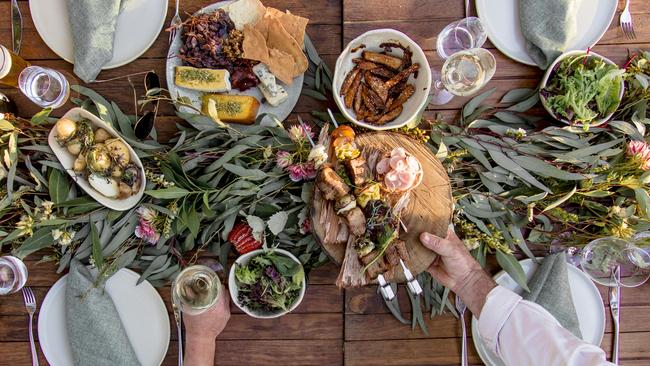
Building private cabins within a national park was always a contentious issue. But it’s difficult not to be impressed by the minimal impact of these elegant spotted gum and hoop pine cabins, prefabricated in Brisbane, installed without concrete foundations and designed to be flat-packed out at a moment’s notice. They occupy the sites of former forestry camps, so hardly a tree was disturbed in their installation. A historic corrugated iron timber-getters’ shack has even been preserved in situ at one of the camps as a kind of museum piece, a wonderful juxtaposition of the old and the new.
The central pavilion is a cosy and relaxed retreat that exudes comfort and fosters conversation. There’s an open bar, a faux-fireplace, ample nibbles, hearty meals prepared by hard-working hosts, plenty of down time for chatting, and of course one memorable game of charades.
As always with hiking, luxury lurks where you least expect it. Of all the pampering we receive, the item that earns the most repeated and grateful praise is the little foam mat we’re issued with to rest our weary backsides off the dirt in comfort at rest stops. The little things do count.
At our final night at Spicers Hidden Peaks Cabins we ceremoniously kick off our hiking shoes and soak our feet in foot tubs around an open fire, nursing a glass of bubbles. We feel renewed and reconnected — to each other, and to this special part of Queensland that won’t stay undiscovered long. It might be young, but the Spicers Scenic Rim Trail is going places.
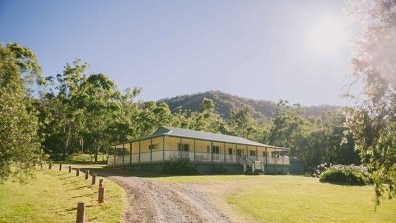
More to the story
Our hike finishes at Cunninghams Gap, gateway to the Southern Downs and the wine country of the Granite Belt. Just west of the divide is the tranquil Goomburra Valley, where the Gordon family have farmed for more than 150 years. Ian Gordon remembers the days when red cedar would be hauled down the hills and taken out through their land. One tree ended up as the family dining table.
In the 1970s the family started offering station stays to visitors. Today Gordon Country is a thriving eco-tourism venture, with plush glamping tents, self-contained retreat cabins, and rustic heritage cabins set on a sprawling, riverside property that nuzzles up to the national park we’ve just traversed. If you get lost on the trail just follow Darlrymple Creek downstream and you’ll end up here. Salvation with style.
spicersretreats.com/scenic-rim-trail
Ricky French was a guest of Spicers Retreats.
This article was originally published in July 2021 and has since been updated.


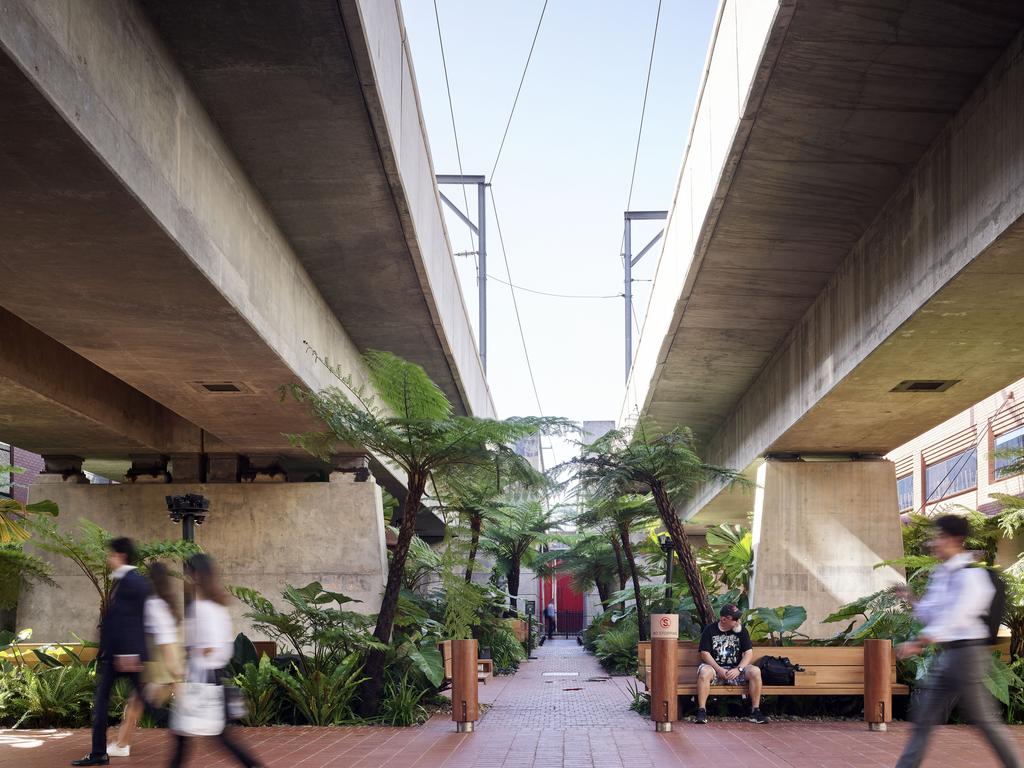
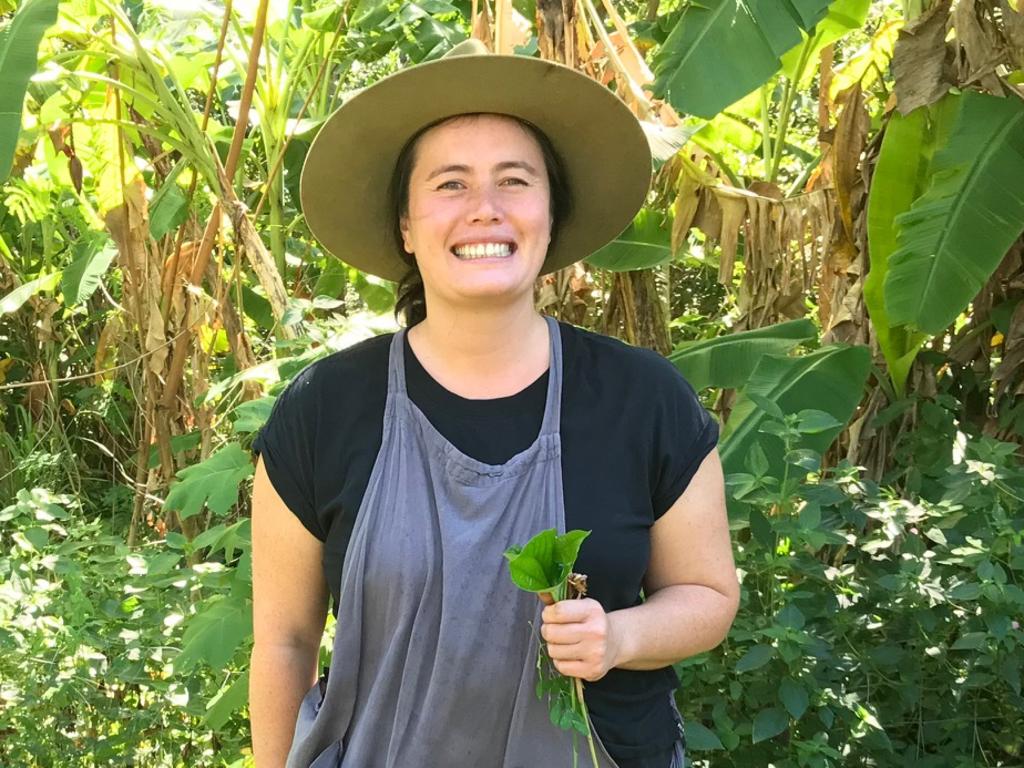

To join the conversation, please log in. Don't have an account? Register
Join the conversation, you are commenting as Logout